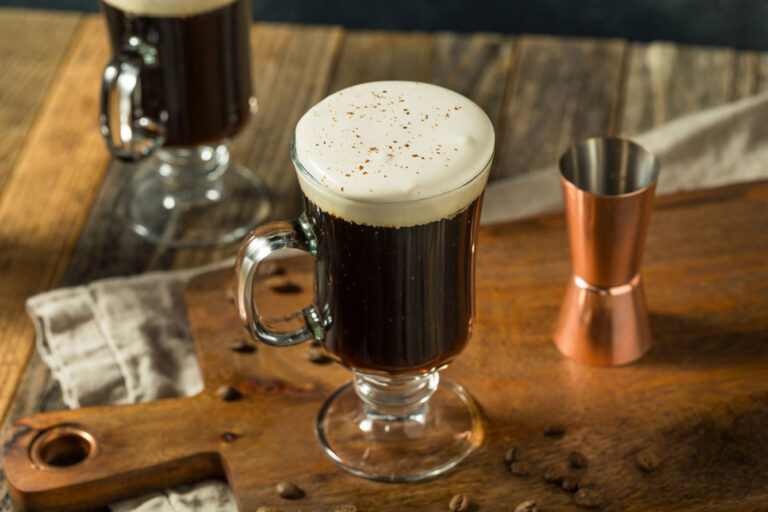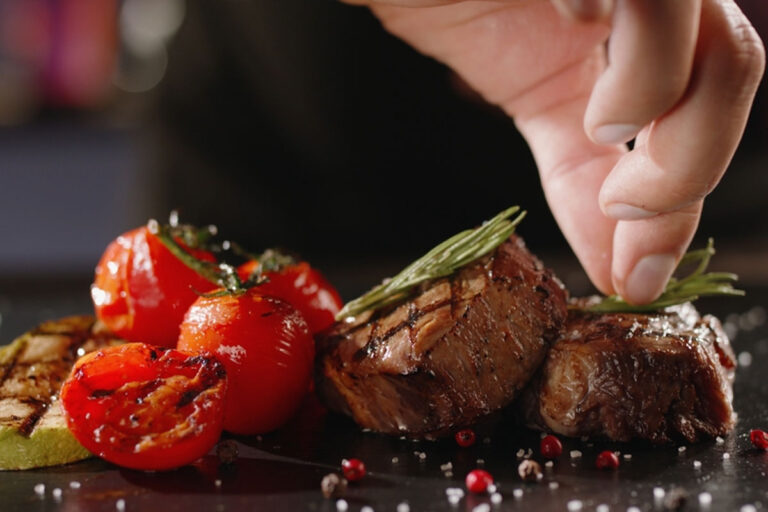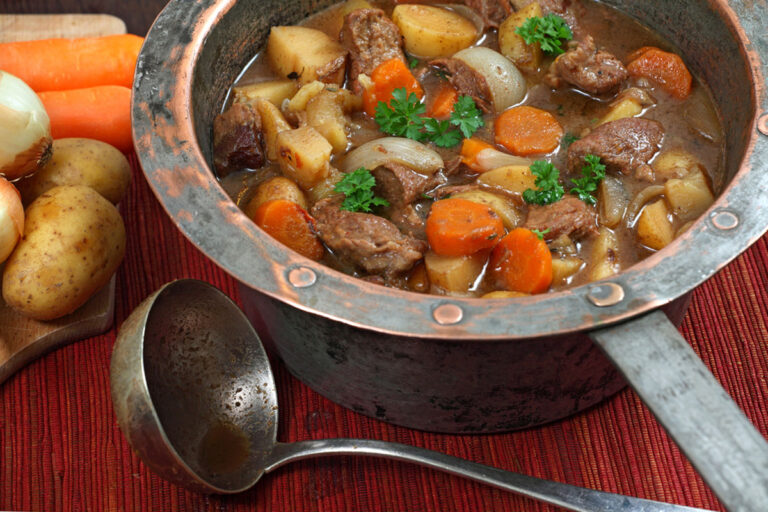Embracing Ireland’s Tale-Weaving Heritage
In the emerald hills and misty valleys of Ireland, a tradition as old as time itself weaves through the very fabric of the land: storytelling. Picture a landscape where the winds carry echoes of ancient tales, where every stone and stream holds whispered secrets passed down through centuries. Ireland’s storytelling culture isn’t merely a pastime—it’s an intrinsic part of the national identity, a lifeline connecting past, present, and future.
Through the ages, the Irish have cherished the art of storytelling, spinning narratives that transcend time. From the flickering warmth of hearth fires to the rugged shores where crashing waves echo the tales of old, oral traditions have been the sacred vessel carrying the collective memory of the Irish people.
The Culinary Narrative
Yet, woven within this intricate tapestry of tales lies an often-overlooked thread: the culinary narrative. Here, amidst the rolling fields of barley and along the rocky shores kissed by the Atlantic’s spray, Irish recipes hold a profound connection to the folklore and myths that have shaped the country’s narrative.
The heartwarming aroma of simmering stews, the humble simplicity of freshly baked bread, and the whispers of spices carried in the wind—all of these elements tell stories. They’re not merely recipes; they’re chapters in the grand saga of Ireland’s cultural heritage. Each dish bears the imprint of legends, rituals, and traditions, embodying the resilience and resourcefulness of a people intimately tied to their land and its myths.
Transitioning to the Culinary Lore
As we embark on this journey through the culinary landscape of Ireland, prepare to be enchanted by the tales behind the recipes. From the misty moors to the bustling kitchens of modern-day Ireland, let’s uncover the hidden stories and mystical connections that infuse every bite with history, folklore, and the essence of Ireland’s captivating narrative.
Irish Recipes and Their Folkloric Roots
Irish Stew
Originating from the humble kitchens of Irish peasants, the origins of Irish stew lie in resourcefulness and adaptability. Once a simple dish crafted from the available ingredients—usually mutton or lamb, potatoes, onions, and herbs—its evolution mirrors the resilience of the Irish people during challenging times. Irish stew embodies the essence of communal dining, where families shared meager resources to create a dish greater than the sum of its parts. Over time, it transformed into a symbol of comfort and togetherness, transcending its modest beginnings to become a staple of Irish cuisine, celebrated both locally and globally. (Try Our Tasty Traditional Irish Stew Recipe)
Barmbrack
Within the folds of this traditional Irish fruitcake lies a tapestry of Halloween folklore. Barmbrack, often enjoyed during Samhain (Halloween), carries a mystical aura, tying in with ancient divination practices. The cake is traditionally baked with symbolic objects—a ring, a coin, a cloth, and sometimes a pea—each holding predictions for the finder’s future. This ritual intertwines the celebration of the harvest’s end with beliefs in the supernatural, offering glimpses into destiny while savoring the rich, fruity sweetness of the cake. (Related Reading: “Halloween in Ireland – A Feast For All Souls”)
Colcannon
Colcannon’s roots delve into Celtic celebrations, specifically the festival of Samhain. This comforting blend of mashed potatoes and cabbage holds more than just culinary significance—it’s steeped in folklore. Legends speak of rituals performed by young unmarried individuals, where charms or trinkets were hidden within the colcannon. Finding certain objects foretold one’s fate, be it finding true love or gaining protection from malevolent spirits. Colcannon, therefore, transcends its simple ingredients to embody the traditions and beliefs of ancient Celtic celebrations, offering warmth and protection to those who partake in its consumption. (Try Our Colcannon Recipe)
Dulse and Seaweed Dishes
In the coastal communities of Ireland, the use of seaweed, particularly dulse, carries a rich tapestry of folklore and historical importance. Seaweed, revered for its nutritional value and versatility, was not only a staple in cuisine but also held mythological significance. It was believed to offer protection against evil spirits and was used in various rituals. Coastal communities revered dulse not just for its taste but for its perceived mystical properties, weaving it into the fabric of their daily lives and culinary practices. (Related Reading – “The Health Benefits of Irish Sea Vegetables: From Kelp To Dulse & Nori”)
These dishes stand as culinary embodiments of Ireland’s cultural heritage, each carrying within it a narrative that transcends taste and nourishment, linking the present to the ancient traditions and folklore that continue to shape Irish identity. Through these recipes, the soul of Ireland’s storytelling tradition is preserved, inviting all who partake to savor not just flavors but the essence of the country’s rich heritage.
The Role of Food in Mythology
In the enchanting realm of Irish mythology, food often serves as a bridge between the mortal world and the Otherworld. Tales abound of sumptuous feasts in the Otherworld, where magical beings such as the Tuatha Dé Danann feast on food that grants eternal youth and immortality. These feasts, depicted in ancient myths, portray food as a conduit to the divine and a symbol of abundance and prosperity.
Seasonal Celebrations
Irish seasonal celebrations are steeped in culinary traditions, each dish a testament to the cultural significance of specific occasions. Take, for instance, the Halloween feast where barmbrack, with its hidden charms, offers glimpses into fate. Another example is the rich symbolism of the Easter meal, where dishes like lamb signify renewal and rebirth, mirroring the themes of the holiday.
Symbols and Superstitions
Ingredients in Irish recipes often carry symbolic weight, deeply rooted in superstitions and beliefs passed down through generations. Consider the potato, a staple in Irish cuisine, symbolizing sustenance and survival but also carrying superstitions—peeling a potato in one continuous strip was believed to bring luck. Similarly, herbs like thyme and rosemary were not only culinary additions but also believed to ward off evil spirits and bring blessings to households.
These culinary tales, woven into the fabric of Irish culture, illustrate how food transcends mere sustenance—it’s a storyteller, a symbol of heritage, and a carrier of beliefs. Whether through mythical feasts, seasonal celebrations, or the symbolism of everyday ingredients, Irish cuisine preserves a legacy that connects generations, providing a window into the country’s folklore, traditions, and the intertwining of myth and daily life.
Preserving Cultural Heritage
In the fast-paced modern world, preserving Ireland’s culinary heritage is crucial in safeguarding the nation’s identity. Efforts by communities, chefs, and organizations to uphold these traditions are paramount. Initiatives like culinary workshops, heritage food festivals, and farm-to-table movements champion the authenticity of Irish recipes. By passing down age-old techniques, sourcing local produce, and reviving forgotten recipes, these endeavors keep the flame of tradition burning bright. Moreover, these dishes serve as ambassadors of Irish culture, attracting tourists eager to savor authentic flavors and immerse themselves in the country’s heritage.
Adaptation and Evolution
While rooted in tradition, Irish cuisine continually evolves to suit contemporary tastes and dietary preferences. Chefs adeptly blend innovation with tradition, offering modern interpretations of classic dishes. They experiment with locally sourced, sustainable ingredients, infusing new life into age-old recipes without compromising their cultural essence. This adaptation caters to diverse palates and dietary requirements, ensuring that these dishes remain relevant and accessible to a wider audience while staying true to their historical roots.
In a world where culinary globalization threatens to overshadow cultural traditions, the efforts to preserve and evolve Irish cuisine stand as a testament to the resilience of heritage. By striking a delicate balance between preservation and adaptation, Ireland ensures that its culinary legacy thrives. These dishes not only tantalize taste buds but also serve as custodians of history, reinforcing Irish identity and fostering a deeper appreciation for the country’s rich cultural tapestry.
Through the dedication of communities, the creativity of chefs, and the enthusiasm of food enthusiasts, Irish culinary traditions continue to evolve, remaining vibrant and relevant in an ever-changing world. The legacy of these dishes endures, serving as a bridge between the past and the present, inviting all to partake in the timeless flavors and stories that define Irish cuisine.
The Enduring Legacy
In every bite of Irish stew, slice of barmbrack, spoonful of colcannon, and taste of dulse-laden dishes, there exists a narrative—a story that transcends time, weaving together the threads of Ireland’s rich history, folklore, and culinary tradition. These recipes, more than mere instructions for preparing a meal, are repositories of culture, embodying the spirit of resilience, community, and storytelling that define Ireland’s heritage.
As these recipes traverse continents and grace dining tables far beyond the emerald shores of Ireland, they carry with them the whispers of ancient tales and the echoes of generations past. Each dish becomes a bridge—a bridge connecting the past to the present, linking families, communities, and cultures across borders.
Through the alchemy of flavors and the magic of tradition, Irish cuisine serves as a vessel—a vessel that carries not just nourishment but stories, memories, and the very essence of Irish folklore. It’s a celebration of identity, a homage to the roots that ground us, and a tribute to the vibrant tapestry of culture that thrives through generations.
Embracing Food as Heritage:
Journeying through the heart of Ireland’s culinary culture and unveiling the hidden narratives behind recipes that transcend the realm of mere sustenance, It has revealed that food is more than a combination of ingredients; it’s a storyteller, a preserver of tradition, and a testament to the enduring spirit of a nation.
In savoring Irish cuisine, whether in the kitchens of Dublin, the bustling streets of New York, or the quiet corners of Tokyo, one partakes not only in the flavors but in the legacy of a vibrant culture. These dishes serve as ambassadors of Ireland’s past and present, inviting all to partake in the timeless dance between heritage and innovation.
In Conclusion
As dining tables around the world become stages for these culinary tales, let us continue to cherish and honor these recipes—keeping the spirit of Irish folklore alive with every meal shared, every story told, and every tradition upheld. For in the simple act of breaking bread, we transcend borders, share experiences, and keep alive the timeless heritage that unites us all. Irish cuisine, with its tales of lore and flavors of tradition, remains an ever-burning hearth—a place where the past and present meet, ensuring that the legacy of Ireland’s culinary heritage endures for generations to come.







